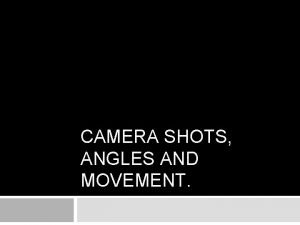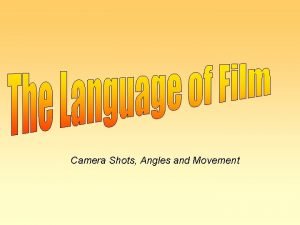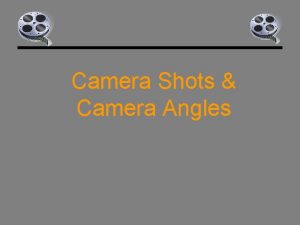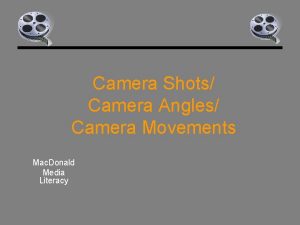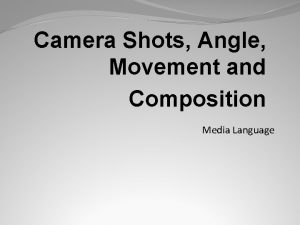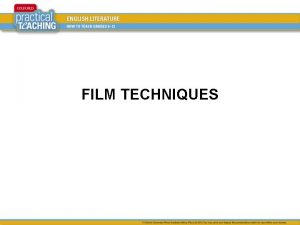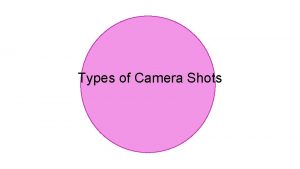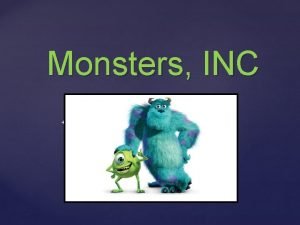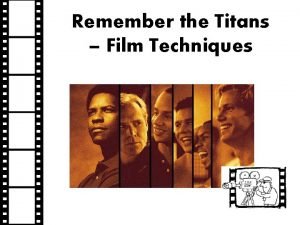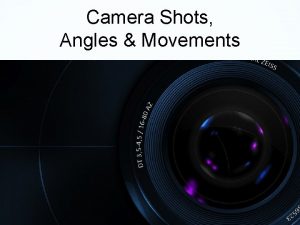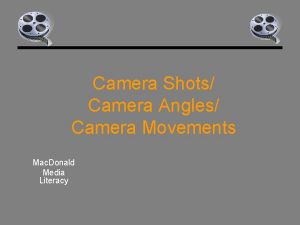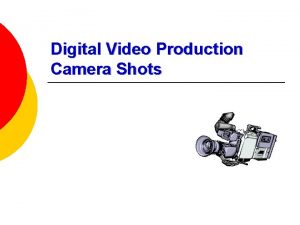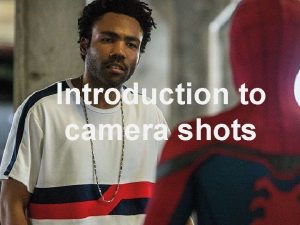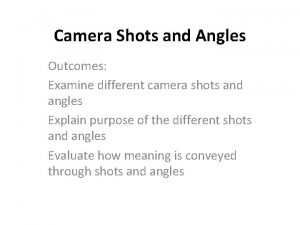Camera Shots Movements Angles To assess how characters









- Slides: 9

Camera Shots, Movements & Angles To assess how characters are developed through nonverbal cues.

CAMERA SHOT TYPE DEFINITION WHY IS IT USED (connotation) All you see on the screen is a particular part of an object or person e. g. an eye, a finger or lips To emphasise an action, reaction or feeling Usually a shot of someone’s face The audience have a close relationship with the character being shown Mid Shot (MS) A shot showing half of a person’s body The audience are being drawn into a conversation or a character’s emotions Wide Shot (WS) A shot showing someone’s entire body with a clear view of the setting in. The camera remains still This shot shows us a character in his/her surroundings Long Shot (LS) Shows a location with people in it. The camera usually tracks or pans This shot is used to show continuous movement by people e. g. Point of View (POV) A shot showing a person/animal/object’s view This shot is used to show a person’s perspective in a narrative Extreme Close Up (ECU) Close Up (CU)

CAMERA SHOT ANGLE/MOVEMENT (denotation) DEFINITION WHY IS IT USED (connotation) Aerial Filmed from a high angle to show a location This shot is filmed from a helicopter/plane to show a large location Pan The camera is placed on a tripod but the head is moved in 180˚ Panning is used to show the extent of a location Track Low-angle High-angle The camera is placed on a track This camera movement is and moves alongside a used to show that the character – usually while they audience is walking/running are walking or running with the character The camera is placed below a person and is looking up at them The camera is placed above a person and is looking down This angle shows that the person on screen is more important This shows that the person on screen is not important

Shots, Angles & Movement Highlight the camera shot types, angles and movement in different colours Camera shots (Colour 1) Camera angles (Colour 2) Camera movement (Colour 3) Extreme Close Up High – angle Pan Close Up Low-angle Track Mid Shot Wide Shot Long Shot Point of View Aerial

Shot Type & Angle Match the following images with the correct camera shot types and/or angles: Image A is a. . . Image B is a. . . Image C is a. . .

Shot Type & Angle Match the following images with the correct camera shot types and/or angles: Image A is a. . . Wide Shot Image B is a. . . Close Up Image C is a. . . Extreme Close Up

Shot Type & Angles Match the following images with the correct camera shot types and/or angles: Image D is a. . . Image E is a. . . Image F is a. . .

Shot Type & Angles Match the following images with the correct camera shot types and/or angles: Image D is a. . . Point of View Image F is a. . . High Angle Image E is a. . . Mid Shot

Camera Quiz Individually, with closed books, answer the following: 1. Which camera angle shows someone is important? 2. Which camera shot shows a character’s perspective? 3. Describe what you can see in a mid shot. 4. Which camera shot shows us a location in detail? 5. Describe what you can see in an extreme close up. 6. Why is a close up used? 7. Describe an aerial shot? 8. Which camera shot shows characters and setting? 9. Why is a high angle shot used? 10. What would you use to shoot a large location?
